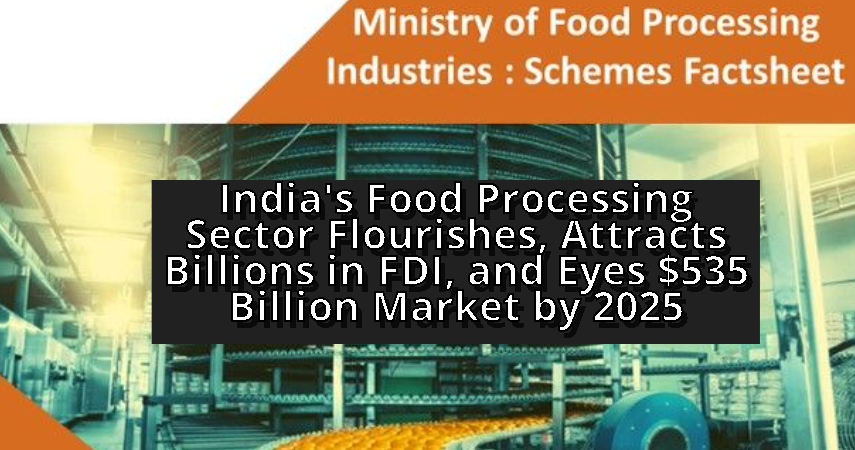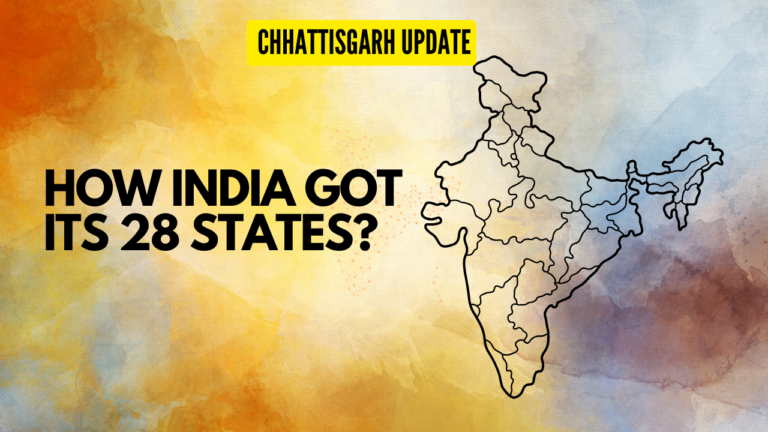
India’s food processing sector has emerged as a vibrant and promising industry, witnessing significant growth and attracting Foreign Direct Investments (FDI) amounting to an impressive Rs 50,000 crore in the past nine years. With the processed food segment contributing 23 percent to agricultural exports and the market poised to reach $535 billion by 2025, the sector holds immense potential for economic development.
Key Achievements:
-
FDI Inflows: Over the last nine years, India’s food processing sector has seen substantial FDI investments, indicating global confidence in its potential for growth and profitability.
-
Contribution to Agri Exports: The processed food segment’s contribution to agricultural exports has soared to 23 percent, highlighting its pivotal role in boosting India’s international trade.
-
Geographical Indications (GIs): India proudly boasts 158 food and agri GIs, showcasing the rich diversity of its culinary heritage. Additionally, the One District One Product (ODOP) initiative has identified 708 unique food items across districts, providing a platform for small farmers and industries to showcase their specialties.
-
Market Projections: With an estimated market value of $535 billion by 2025, India’s food processing sector is poised for exponential growth, promising substantial economic returns.
Significance of the Food Processing Sector:
-
Farmers’ Income Boost: The sector plays a crucial role in enhancing farmers’ income by adding value to agricultural produce and minimizing waste.
-
Employment Generation: As the industry expands, it creates numerous employment opportunities, contributing to economic development.
-
Foreign Exchange Earnings: By promoting exports of processed foods, India earns foreign exchange, further strengthening its economic position on the global stage.
-
Food and Nutritional Security: The sector is instrumental in ensuring food and nutritional security for the nation, aligning with broader socio-economic goals.
Challenges and Initiatives:
-
Infrastructure Bottlenecks: Challenges such as inadequate cold storage, processing facilities, and transportation networks are being addressed to facilitate smoother operations.
-
Skill and Technology Gap: Initiatives like the Pradhan Mantri Kisan SAMPADA Yojana and the Production Linked Incentive Scheme for Food Processing Industry aim to bridge the gap by providing training and encouraging the adoption of advanced technologies.
-
Food Wastage: Tackling the issue of food wastage, which stands at 74 million tonnes annually, remains a priority, with ongoing efforts to implement sustainable practices throughout the supply chain.
Government Initiatives:
-
Pradhan Mantri Kisan SAMPADA Yojana: This comprehensive scheme, inclusive of the Mega Food Park component, seeks to modernize and streamline the food processing industry, promoting efficiency and competitiveness.
-
One District One Product (ODOP): This initiative not only showcases the unique products of each district but also provides a distinct identity to small farmers and industries, fostering growth at the grassroots level.
-
Production Linked Incentive Scheme: Aimed at encouraging investments and boosting production, this scheme acts as a catalyst for the food processing industry’s expansion.
Conclusion:
India’s food processing sector stands at the forefront of economic transformation, attracting investments, creating employment, and contributing significantly to agricultural exports. As the nation addresses challenges and implements strategic initiatives, the sector’s trajectory towards a $535 billion market by 2025 underscores its pivotal role in India’s journey towards economic prosperity. For more updates on Chhattisgarh’s progress, visit www.chhattisgarhupdate.com.






